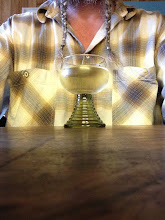Now restored, it's actually very pretty. OK the main entrance space is cramped, and it's an object building that might be considered a bit block like, and the workshops never really worked and still don't, but there is something brilliant in those same workshops resembling car parks. Multi-story concrete car parks were a trilling new thing; they featured on postcards!
You might see the same kind of design thinking in the Bauhaus as you do in a Tiger tank; some ruthless logic pursued to an end you'd better not mess with, it inspires respect. But trying to put my finger on it I realised there is one thing I'll agree with those postmodern critics about, because the Bauhaus complex could hardly be described as lyrical.
Now lyrical might be another dangerous word not to be messed with, but that's immediately what I see if I compare the Bauhaus to another modern object building, The Pavilion Suisse by Le Corbusier of 1933. Here the entrance space is hardly some cramped echo of a brutish nineteenth century school, but an exercise in something else entirely, something that appears to do just about everything it can within a rigorous structural system as to bring comparison to poetry- stretching the bits, if you like, that are there to be stretched. Remember, place a marble on the floor as you come through the door, it rolls to the reception desk, to your left is the lift, all machinery exposed, ready to spin and clank, in front stands a strange collage on some kind of fin that shrouds a curving slice of staircase: actually a manifesto for L-C's whole way of thinking. The building anticipates, in these elements and more, not only the Unite d'habitation, but Ronchamp chapel, and in precedent, harks back to the acropolis, or if that is too ambitious for you, at least L-C's previous housing done for the Weissenhoff Seidlung of 1928; and ALL at the same time! No wonder L-C loved jazz.




No comments:
Post a Comment